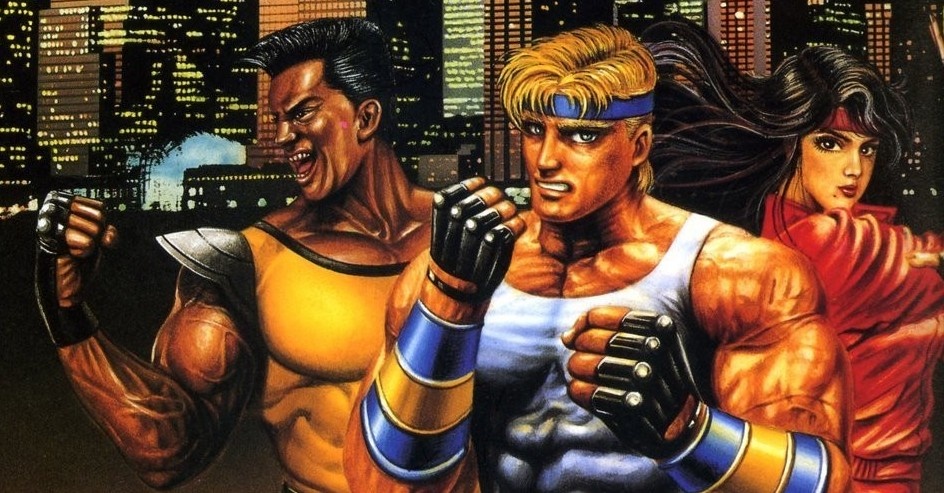Written for XPGain, recreated with permission.
There is an inherent charm in the absurd, the abstract, the bizarre.
The unusual is memorable, it implants itself into the mind and rearranges the synapses to new and bizarre shapes. A mind exposed to oddities isn’t one that outright rejects the abstractions, it explores them and examines them. Humans are learning machines, highly talented in pattern recognition, and manage to twist things in the mind to redefine the unusual aspects into defined shapes; turning them cleaner, crisper, and more comprehensible.
That’s part of what makes the unusual so fascinating. It’s a chance to engage the mind, re-evaluate information, and produce newer thoughts from the Frankenstein-esque chimera of sights, sounds, and significance of former events. Human nature relishes the ability to observe and rationalize the unconventional.
The duality of that sheer oddity in the settings and styles of Streets of Rage 2 and the familiarity of arcade-style beat-’em-up mechanics while also being quite singular and unique. It’s a game wherein the player can beat of clones of denim-jacketed thugs while wearing roller skates, and explode wooden tables for fully formed fried poultry to materialize in its place. It’s a game that characterizes video game conflicts in their simplest and most viscerally physical forms, and also turns a baseball field’s pitcher’s mound into a high-speed underground elevator.
Beyond the trappings of the weird though, Streets of Rage 2 knows its craft and mechanics. Players have the option of choosing between four characters, with varying specialties and movesets. The mechanics are simple, with only a jump, attack, and special button, the game can be grasped relatively quickly. The combat in Streets of Rage 2 consists of groups of enemies attacking the player, or players, in waves. Each enemy will have a life bar and name shown under the player’s life bar. There are occasional power-ups or weapon items that will appear on the map, able to be picked up and used as long as the player can keep them. Players progress through stages, culminating in boss fights before the stage will change.
Though they’re fairly simple, a lot of challenge comes from the game’s aged mechanics. Enemies can be a scant fraction of distance above or below the player on the field, and that makes attacks swing wild. The mess of enemies can sometimes create impossible situations of attacks flying too fast to avoid, and ultimately impossible to break free from. Further, the game’s difficulty is still largely rooted in the quarter-void tactics of the arcades that came before it, where enemies will have more mobility and damage than players do, often entirely dwarfing the player’s capabilities and damage both. All in addition to the mass of foes that can appear on screen at a time.
Further, to compound the difficulties, the attack patterns and player mobility tend to come across as rather stiff. Not necessarily for the original release date, but certainly so as compared to current games. The entire assemblage just feels a little too heavy, clunky, and doesn’t flow or give the player a fair chance in all situations. Perhaps with more options, or a better skillset for getting out of panic situations, that would be less of an issue. Given the mechanics as they are, though, the already taxingly difficult game can compound to be incredibly frustrating.
Despite the above, and in part because the game’s patterns can be learned with enough patience and experience, it is a joy to play. The graphics are bright and pleasant despite being lifted from a 16-bit console, and the early 90s techno is beautifully well-suited to the strange atmospheres and evolving landscapes that fill the streets. There are several visual techniques in play, from the halogen glow of lamps slightly obscuring sight as they pass in the foreground to the faintly shimmering reflect of a city skyline reflecting from water under a bridge, the game is still very visually stimulating.
Part of that comes from how charming the sheer oddity of the scenarios outside of the context of the game are. There are ninjas on a pirate ship, electrified whip-wielding dominatrixes in jazz bars, street punks in alien spaceships, muay thai kickboxers in jungles, and kung-fu practitioners that rain from the sky onto baseball fields-turned-subterranean elevators. Given the numerous settings and many, many enemy types and sprites, the game is surprisingly endearing for its outright weird situations. Because of these oddities, it can almost feel weird having brief sections where the setting doesn’t feel wrong, like when there are thugs in a gaming arcade, or motorcyclists on a highway bridge. Normalcy almost doesn’t seem to fit.
But, at its core, Streets of Rage 2 is as well-assembled, well-polished, and simply fun game. Because of the numerous enemy attack patterns, varying strategies, multiple enemy types, charming stage designs, and the sheer oddity of the situations, it can be hard not to love it. It’s a weird game, and a very aged one, but respectable for how amazing it is within the genre. For modern gamers, it will probably feel a little too stiff, a little too odd, but not incredibly so. It doesn’t lack polish, and for how stiff the game can feel as compared to modern titles, they still flow well and it’s stiff more due to comparative framerates and reaction times than the high-reflex actions in current games. Perhaps not as perfect today as it once was, but as a piece of gaming history, it still stands on its own two feet. It’s an experience that both helps see how modern games have evolved since, but also an equal parts smooth and chaotic experience that is a joy to play around in.
Utterly bizarre, disarmingly fun, and a classic.

Thoughts?